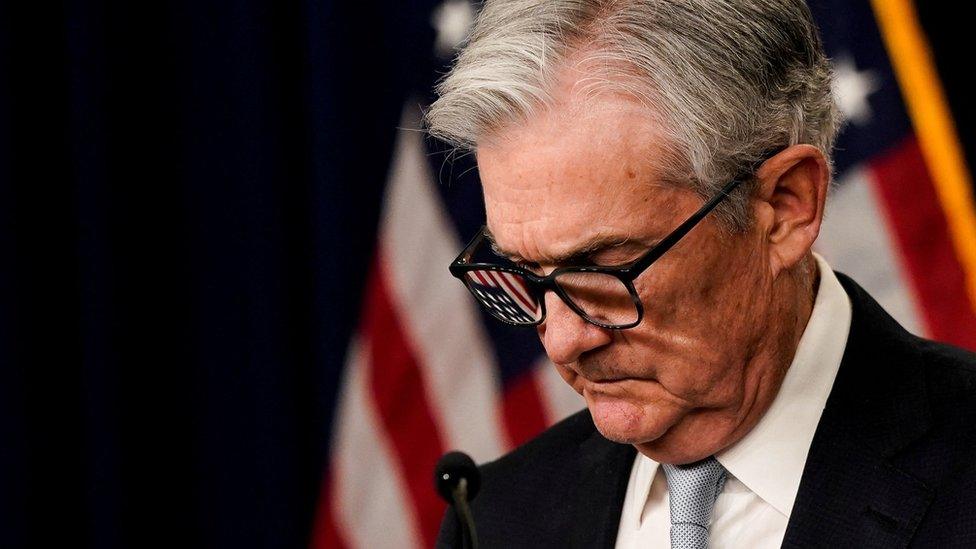US economy sees robust jobs growth in December
- Published

Jobs growth in the US remained strong last month even as the economy wrestled with the impact of fast-rising prices.
Employers added 223,000 positions in December, pushing the jobless rate down to 3.5%, from 3.6% in November.
The resilience of the labour market has raised hopes that the world's largest economy will avoid a severe economic downturn this year.
The US central bank is raising borrowing costs to try to cool the economy and ease the price pressures.
As firms struggle with the impact of higher interest rates and the possibility of lower consumer spending, recent news of big job cuts at banks and tech companies, such as Amazon, has drawn attention.
But the monthly report from the US Labor Department showed nearly every sector in the economy adding jobs, with bars and restaurants, health care firms and construction businesses helping to drive the gains.
Though job losses are rising - especially in the tech sector - the figures overall remained near historic lows last year, said Andrew Challenger, senior vice president at Challenger, Gray & Christmas, which has been tracking such announcements since the 1990s.
"The overall economy is still creating jobs, though employers appear to be actively planning for a downturn," he said.
The US economy has slowed sharply since 2021, when it boomed after the pandemic reopening.
Higher borrowing costs are hitting firms in areas such as housing and banking, while rising prices are straining household budgets, raising concerns about consumer spending - the biggest driver of the US economy.
The most recent report showed prices in the US climbing 7.1% from a year earlier - far faster than the 2% rate considered healthy.
Analysts said the strength of the labour market makes the path ahead uncertain, since the Federal Reserve may need to continue with big interest rate rises if it hopes to rein in inflation.
"As long as the labour market remains this tight, the Fed cannot rest assured that inflation will return to its 2% target," said Ronald Temple, chief market strategist at Lazard.
Average hourly earnings in December rose by 4.6% from last year, the Labor Department said. That was a slower pace than in November, in what analysts said was a positive sign for the fight against inflation.
However, it was mixed news for workers, who have not seen their pay rises keep up with prices.
"Worker pay is failing to keep up with the rise in prices at the consumer level. This is a source of stress on household budgets. How that equation unfolds in the months ahead will be key, including whether inflation pressures relent," said Mark Hamrick, senior economic analyst for Bankrate.com.
Related topics
- Published14 December 2022

- Published13 December 2022
